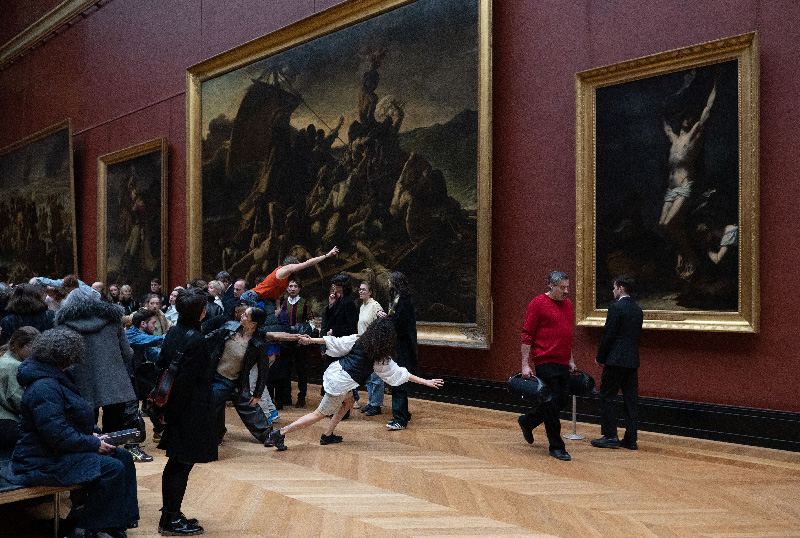In 2022, “Forêt” by Anne Teresa De Keersmaeker offered members of the public the rare opportunity to be one of five hundred spectators allowed into the Louvre for an evening. Immediately, she lost herself almost completely in the former residence of the French kings, as if she were the sole witness to how all these paintings speak to each other over the centuries and form a dense forest, a proliferation of images – a “forêt.”
In this dance work by Anne Teresa De Keersmaeker, an elderly gentleman stepped onto the precious parquet, flanked by a dozen dancers from her Brussels company Rosas and carrying two ghetto blasters: De Keersmaeker’s music dramaturge and pianist Alain Franco, as berserker and music-maker. He was tasked with answering the question as to how one could throw even a single sound at the overwhelming historical burden of the palace, this mirror of the nation’s past, cast in countless facets. The man in the jumper, almost bent double under the enormous musical globe of all the sounds ever declared to be art amid this collection of classical masterpieces begging for respect, replies:

